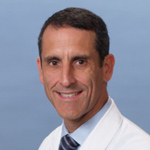The emergency department (ED) is quite possibly the most vulnerable area in our healthcare system when it comes to harm from avoidable errors. On almost every shift, emergency physicians and nurses cope with high production pressures, unknown patients, ritualized multitasking, noise, frequent interruptions, suboptimal teaming and uncontrolled flow. Some of their patients may be unstable and in highly dynamic phases of illness. What's more, these providers often find themselves attempting to cover the entire spectrum of specialty care (which spans 24 specialties and nearly 100 subspecialties).
In other words, if one were to develop a test lab for medical error, it would quite possibly look like today's ED. But given these realities, is safety our top priority in emergency care?
I'm sure we'd all like to say yes. However, recall your last hospital meeting. How much attention was focused on strengthening the system to avoid medical errors? And how much was devoted to other priorities such as patient satisfaction, flow, core measures and other regulatory issues?
As emergency physicians, nurses, hospital administrators and other team members, we care about our patients, our teams and the quality of our work. But we are often overwhelmed by the demands of our role. And because we assume that safety is already built into what we do, we too often allow other issues to take precedence.
The basis of our safety assumption is a reliance on hope. We hope that everything will be OK. If there is vulnerability, we hope it will come to light. Or we hope that our own prowess will somehow overcome it. Or that our system will somehow mitigate the problem. (After all, we showed a training video on safety.)
Hope is too often our occult modus operandi. Paraphrasing the words of Judy Agnew and Aubrey Daniels, authors of Safe by Accident, "Hope is a terrible strategy for safety."
So how can we change our hopeful orientation and move toward meaningful change?
We need to start by acknowledging that serious harm happens far too often. The Institute of Medicine (IOM) brought this to our attention in 1999, spurring a barrage of hopeful safety messages, programs, intentions and deliberations. Despite this, some experts estimate that iatragenesis remains the third leading cause of death in the United States. The Office of the Inspector General and numerous other groups still report high levels of preventable error, complications and harm.
We are striving to make progress, but how? Why are we stuck? Maybe it's because we are not being authentic about our vulnerabilities, and we have not made safety our true first priority.
This statement is not an attempt to criticize or assign blame, but an urgent call for us to acknowledge the risks and thus exercise greater caution. It is a call for a proactive approach, laser focus and unrelenting commitment to increasing the resilience of our systems and practices. It is a call for the industry to take the bold step of acknowledging that we can't be everything to everybody and still be excellent in emergency care. No other industry (or medical specialty for that matter) operates that way. We need to understand that there are real limits to what our people and systems can do, and it is important that we set clear priorities.
Only when we authentically acknowledge our vulnerabilities will we make progress. Only when we design and engage our systems as if we had "skin in the game" will we start to make a real difference. Only when we make safety truly part of the mission and an essential part of our daily routine will our practices and people be safer. Only when we commit to making safety our first priority will we achieve a transformation in safer care.
We don't need more talk, we need a true commitment to spur on massive transformation. Safety should be our first priority at every level: in local practice, hospital policy, national priorities, research and education.
Here are some key steps administrators and ED leaders can take to make safety a top priority:
Be authentic about your vulnerabilities. Remember, even the best-run EDs operate in conditions ripe for error.
Take the shame out of safety. Create a culture that makes it safe for people to reflect, admit mistakes and engage in the improvement process.
Proactively identify risk and vulnerabilities. A good starting point is to conduct a thorough assessment of staff concerns.
Utilize evidence-based resources to address problem areas. The CUSP Toolkit (available free from the AHRQ) includes a series of educational modules designed to make care safer and build your organization's capacity to address safety issues.
Build a team to promote, educate and solve safety concerns. Instead of relying on volunteerism, devote time and funds for people to address the issue.
Strive for continuous improvement. Once you've assessed your needs and addressed your priorities, it's time to go back to the start and repeat the process.
Think long-term. Dedicating scarce resources to safety improvement can be difficult in the current regulatory climate. But make it your first priority, and your people, your patients and your results will follow.






















